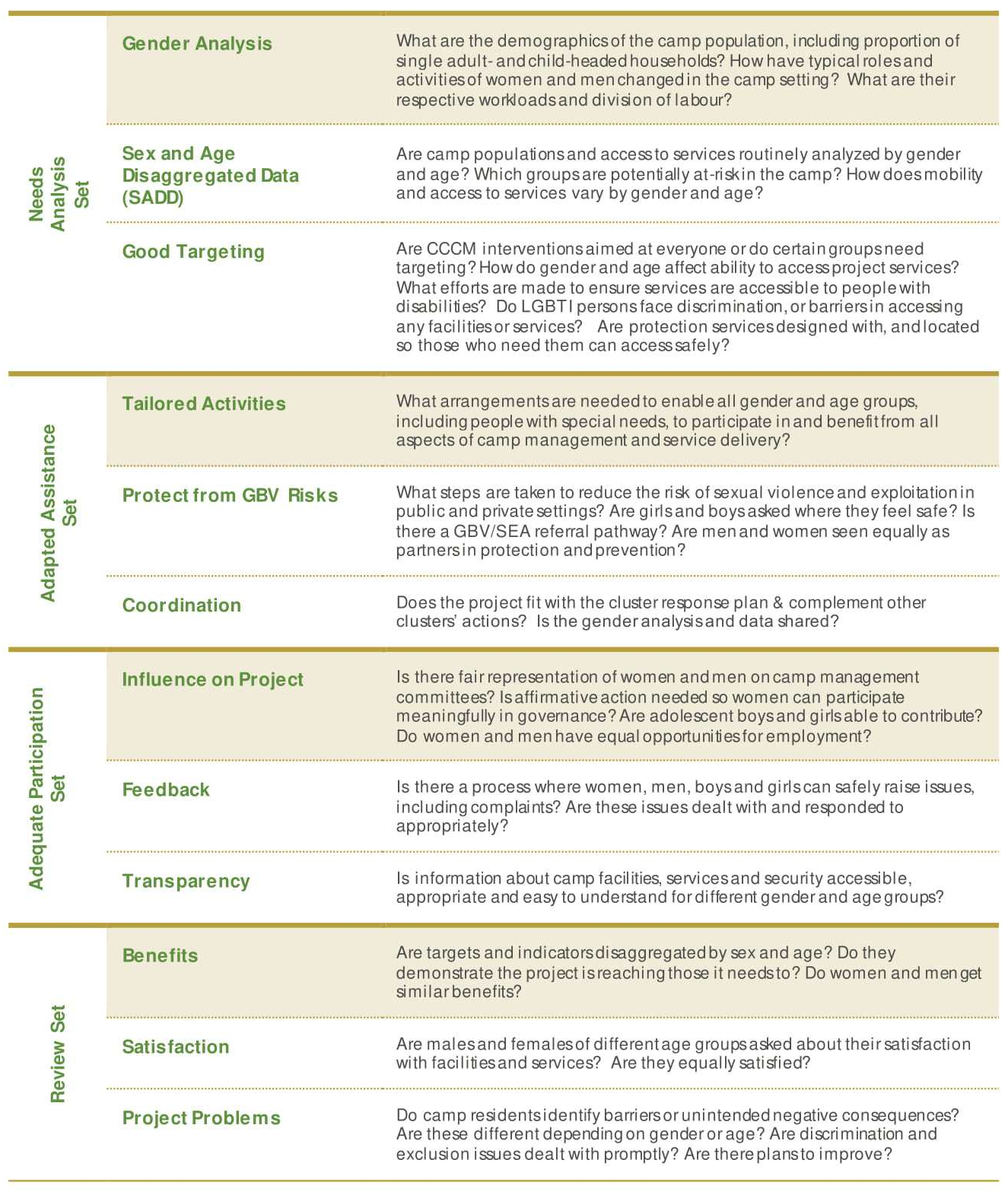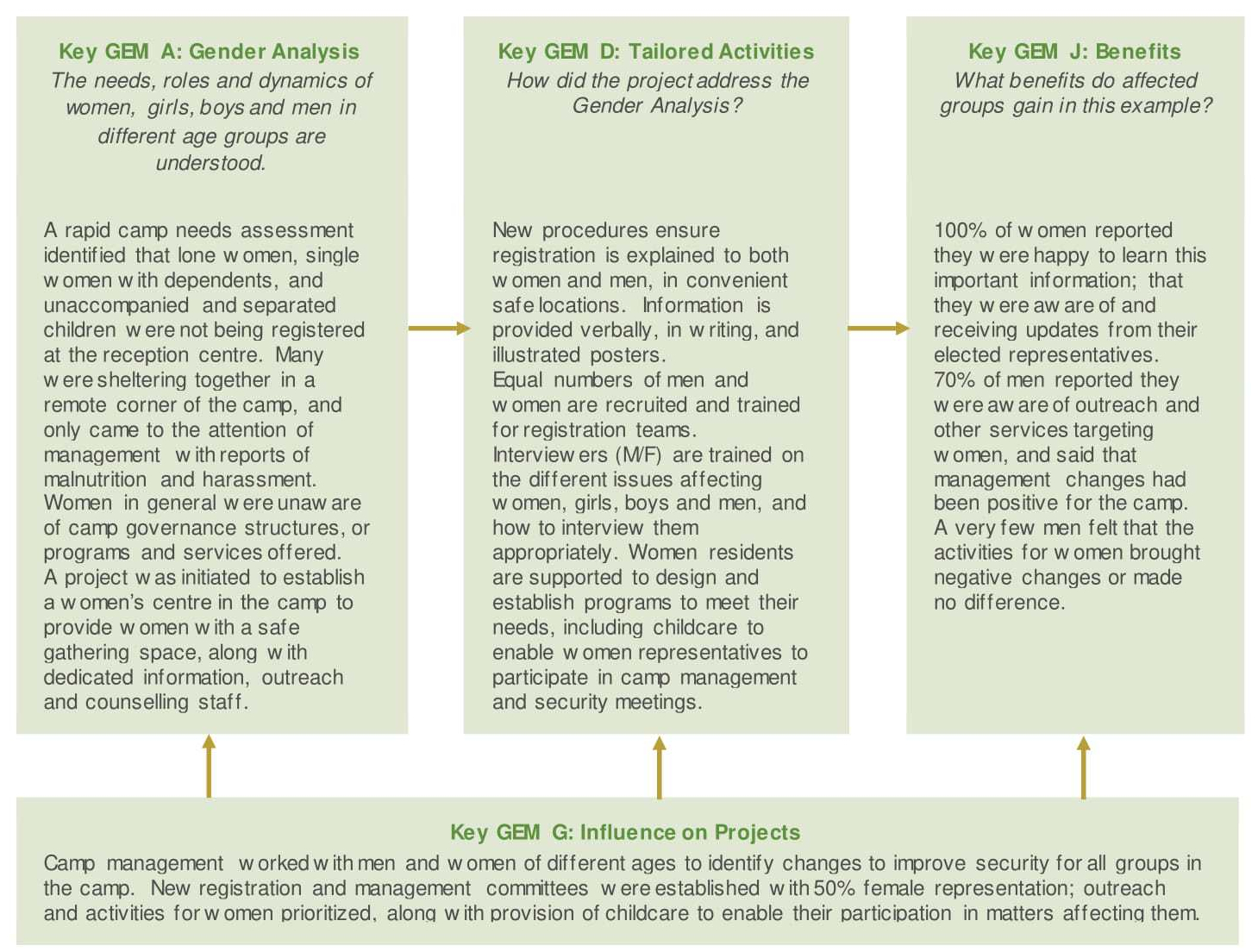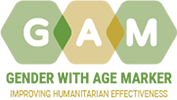This Tip Sheet offers interventions, guiding questions and an example of how 4 Key Gender Equality Measures (GEMs) support gender equality in Camp Coordination & Management projects and programs. It should be read together with the GAM Overview. The IASC GAM identifies and codes projects based on the extent to which key programming elements are consistently present in proposals and implemented projects. Four steps (GEMs) are assessed in the design phase, and twelve GEMs are reviewed in monitoring.
Conflicts and natural disasters affect women, girls, boys and men differently; they face different risks and have different priorities. Humanitarian actors need to understand these differences to ensure that services benefit all segments of the population and do not put some people at risk.
CCCM interventions can make assistance responsive and fair, improving gender equality, by:
- Ensuring reception & registration is equally accessible and welcoming of women, girls, boys and men
- Consulting equally with males and females of appropriate ages on matters that affect them
- Reviewing ways of working to ensure that views and priorities of all groups are reflected in design of the camp and its programmes
- Making sure all gender and age groups can participate and benefit equally from assistance and services
- Analyzing security risks and problems with (separate) focus groups of women and men; agreeing and implementing with them targeted protective actions to increase safety.
Questions to inspire action:

Gender mainstreaming, or a targeted action?
Some Camp interventions may target actions to address specific discrimination or gaps resulting from gender norms and expectations: these are “targeted actions” (T.) For example, a project may focus solely on supporting at-risk female households in the camp, or it may focus on addressing social norms that exclude women from leadership bodies.
However, most humanitarian interventions will aim to assist everyone in need while adapting activities to address the roles and priorities women and men (or boys and girls) in different age groups: gender mainstreaming (M.) An example would be an information campaign aimed at everyone, with different activities and messages for different gender and age groups. The GAM information sheets explain coding in more detail.
Example of Good Gender Equality Programming in CCCM
(GAM Code 4T – can you work out why? See the GAM Information Sheet)

Using Gender Equality Measures in projects or cluster programs leads to better quality programming, responsive to gender and age issues.

